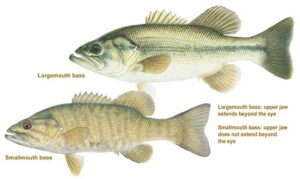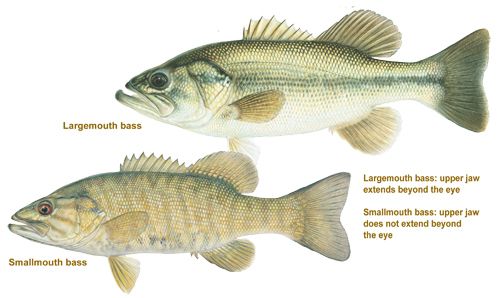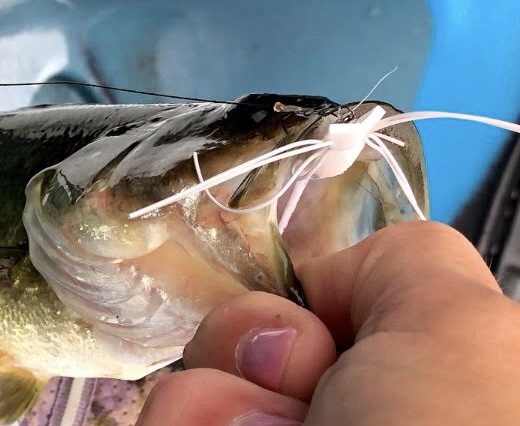Largemouth vs. Smallmouth – What is the difference?
So, you are going out Fly Fishing for Bass – there are some differences between the Bass caught in Michigan and many other states. Two of the most common Bass are the Largemouth Bass – often called a Largie and the Smallmouth Bass – called the Smallie.
As their name implies, the most distinct difference is the size of their mouth; a Largemouth’s mouth extends beyond its eye, and the Smallmouth does not.
Another distinction is their coloring; a Smallie tends to be a brownish color, and the largemouth more of a greenish shade. The striped pattern is different between the two – the Largie has a stripe that is darker in color and runs horizontally from the eye to the tail. The Smallie has vertical running lines that are less prominent.

One of the most important differences for an angler to know is where you catch them. Both are in rivers and lakes but like different conditions. Largies like slightly warmer water and are often found in ponds or lakes. If you can see aquatic vegetation, like lily pads, they will be hiding under it. A fly thrown on a lily pad then plopped into the water next to it will be sure to elicit a strike from the hiding largemouth.
Smallmouth like a cooler, moving water and are most at home in a stream or river with a rocky bottom, borders, or ledges.
Temperature is essential; a largemouth will be found closer to shore, where the temperatures are around 80 to 90 degrees. A smallie will hang out in deeper, cooler water with temperatures of 78 to 88 degrees.
Both are aggressive predators. When flyfishing, swing a wooly bugger or streamer for underwater action. For topwater, use a popper or my favorite white gurgler on topwater, and you will indeed receive a strong attack of your fly. They are my favorite warm water species to target due to their aggressive takes and intense fight.




